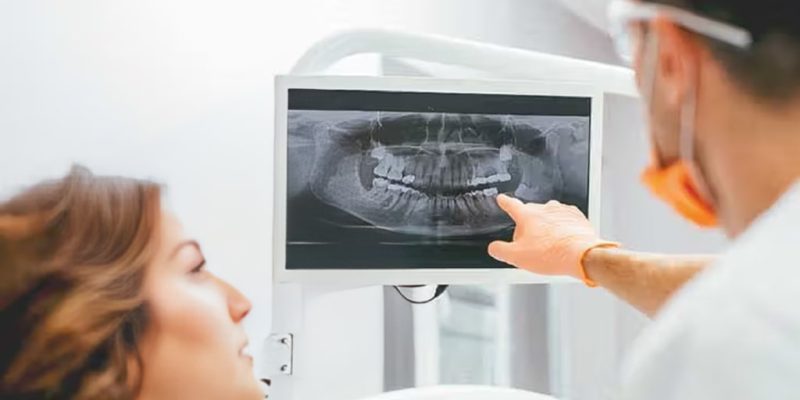- Jaypee Hospital Rd, Goberdhanpur, Sector 128, Noida
- CLINIC : + 91 8076243481
Blog

Details
READING TIME
3 min
CATEGORY
Blog
AUTHOR
Dr. Praveen Kumar
Are Dental X-rays dangerous?
Dental X-rays have become an integral part of modern dentistry, aiding dentists in diagnosing and treating various oral health issues. However, concerns about the safety of dental X-rays have led to questions about their potential dangers. In this article, we'll explore the safety aspects of dental X-rays, shedding light on the benefits and addressing common misconceptions.
The Purpose of Dental X-rays: Dental X-rays, also known as radiographs, play a crucial role in providing a comprehensive view of the teeth, jawbone, and surrounding structures that may not be visible during a regular dental examination. They assist dentists in detecting dental problems early, guiding treatment plans, and monitoring oral health over time.
Minimal Radiation Exposure: One of the primary concerns regarding X-rays is radiation exposure. However, it’s important to note that dental X-rays involve minimal radiation. Technological advancements in recent years have significantly reduced radiation levels, making the procedure safe for patients.
Advancements in Technology: Digital radiography has replaced traditional film X-rays in many dental practices. Digital X-rays expose patients to even lower levels of radiation compared to film X-rays and provide immediate images for quicker diagnosis. This technological shift enhances both the safety and efficiency of dental X-rays.
Protective Measures: Dentists take several precautions to minimize radiation exposure during X-rays. Lead aprons and thyroid collars are commonly used to shield sensitive tissues from radiation. Additionally, dentists carefully consider the frequency and necessity of X-rays, tailoring the imaging schedule to each patient’s unique needs.
Risk vs. Benefit: When considering the potential risks of dental X-rays, it’s crucial to weigh them against the benefits. Early detection of dental issues through X-rays can prevent more extensive and costly treatments later on. The benefits of timely diagnosis and effective treatment often far outweigh the minimal risks associated with X-ray exposure.
Patient Education: Dental professionals prioritize patient education on the safety measures in place during X-rays. Discussing concerns, providing information about radiation levels, and addressing any questions patients may have can help alleviate fears and build trust in the dental care process.
About Us
Dr. Praveen Kumar is a distinguished professional who holds a Master’s Degree in Dental Surgery from Meerut University, he furthered his education with an MBA in Health Care Administration from FMS, Delhi University. Dr. Kumar is a Diplomat of the World Congress of Oral Implantology and a Fellow of both the Pierre Fauchard Academy and the International College of Dentists. Dr. Kumar is a Diplomat of the World Congress of Oral Implantology and a Fellow of both the Pierre Fauchard Academy and the International College of Dentists.
Information
- Developed By Online B2B Digital Technology © 2024 – All Rights Reserved
